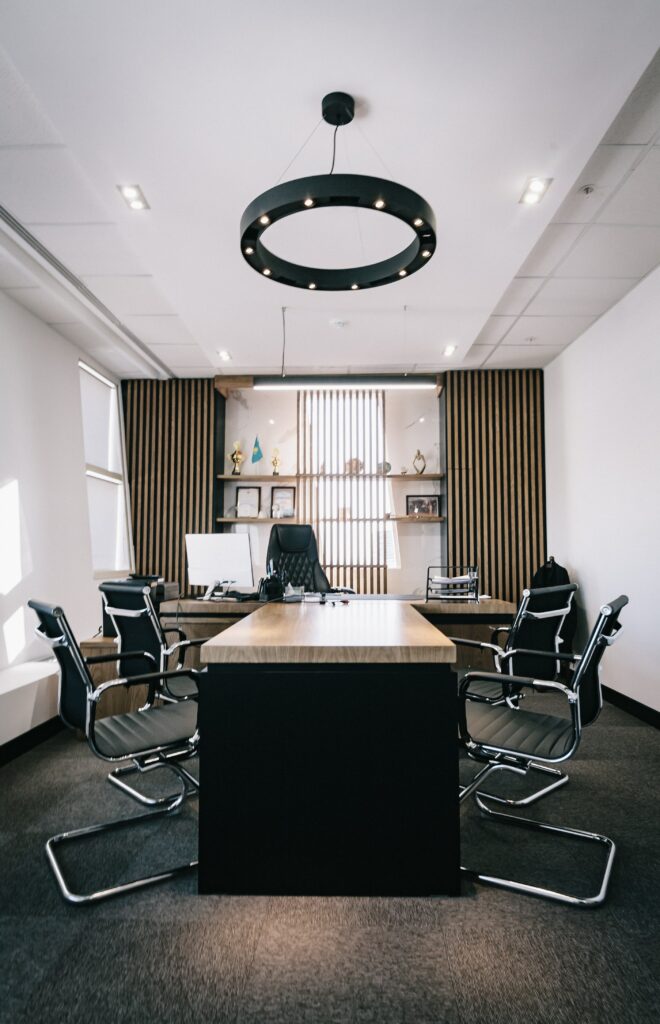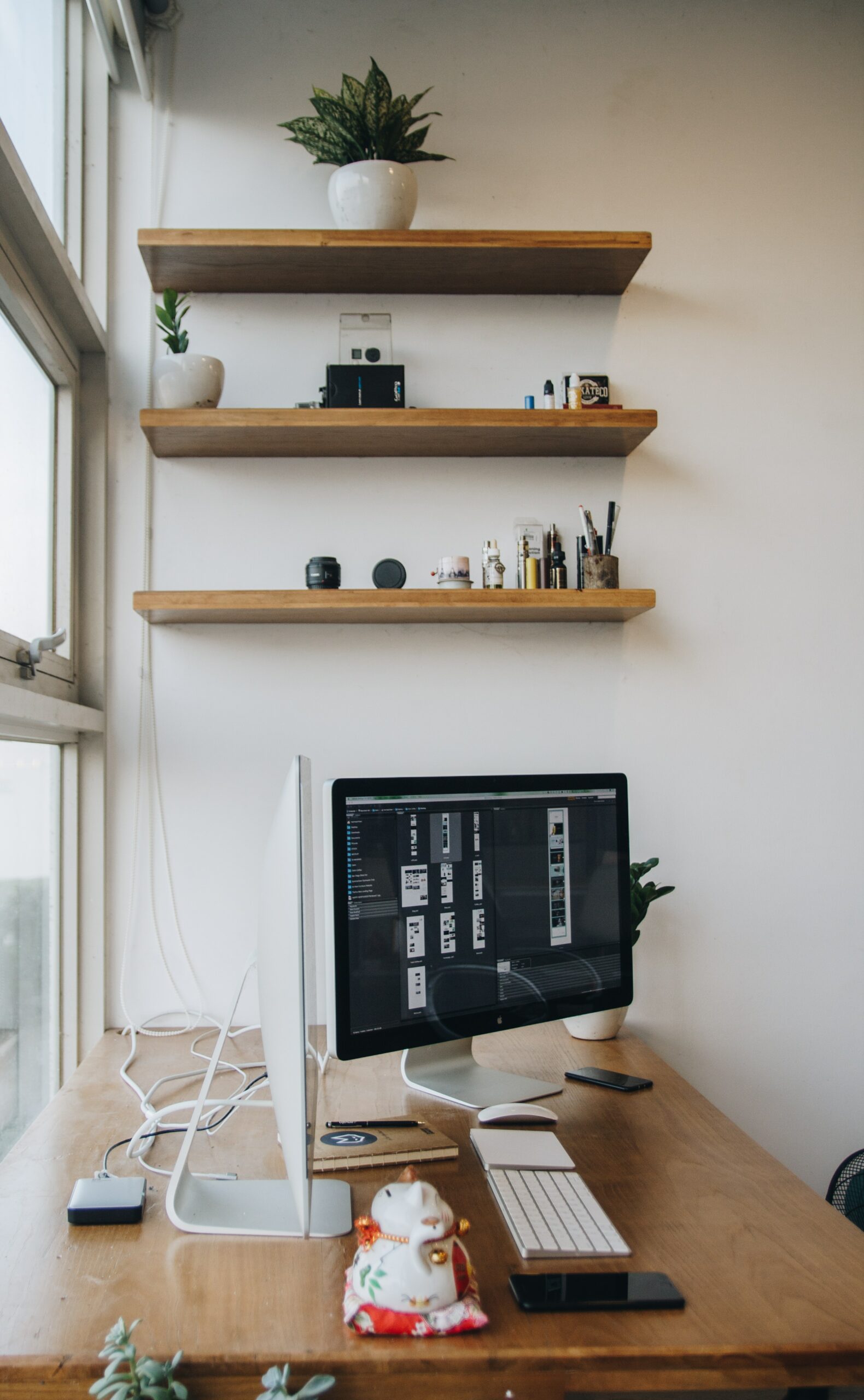Maintaining a clean and tidy office space is not merely about aesthetics. It’s about creating a conducive environment that promotes productivity, boosts morale, and conveys professionalism.
Here are six essential practices that can help keep your office space neat and organized.

1. Regular Cleaning Schedule
The first step in maintaining a clean office is establishing a regular cleaning schedule. This means more than just a quick sweep and emptying the trash.
It involves deep cleaning tasks such as dusting, vacuuming, sanitizing surfaces, and cleaning windows.
Regular office cleaning involves systematic planning and execution of cleaning tasks to ensure every office corner is tidy and hygienic. An office cleaning service can greatly help in implementing a regular cleaning schedule.
These services are customized to cater to the specific needs of an office, as no two offices are identical. They typically follow a comprehensive checklist that includes daily, weekly, and monthly tasks.
Daily tasks often include dusting furniture, emptying trash bins, spot-cleaning the office areas, and cleaning common areas like kitchens and bathrooms. Weekly tasks might involve more detailed cleaning, such as vacuuming and mopping floors, cleaning the refrigerator, and polishing stainless steel surfaces.
Monthly tasks could include deep-cleaning activities such as sanitizing all surfaces, cleaning windows, and maintaining office equipment.
In addition to these regular tasks, most experts recommend a thorough deep cleaning of your office at least every six months, which can be handled by your contracted office cleaning service.
2. De-clutter Regularly
De-cluttering regularly is a crucial practice in maintaining a clean and tidy office environment. An office cluttered with papers, files, and miscellaneous items can negatively impact productivity and create a stressful working atmosphere.
It can also make it difficult for employees to find necessary documents or tools, wasting valuable time.
Regular de-cluttering involves organizing your workspace and getting rid of unnecessary items. This could mean disposing of old documents that are no longer needed, donating unused office supplies, or storing rarely used items in designated storage areas.
Implementing effective storage solutions can also aid in de-cluttering. Use filing cabinets, shelves, and desk organizers to keep essential items neatly arranged.
In the digital age, consider transitioning to electronic files and documents when possible. This not only reduces physical clutter but also makes file sharing and collaboration more efficient.
3. Implement a Trash Management System
Implementing an effective trash management system is a crucial aspect of maintaining a clean and tidy office space.
This involves more than just having a trash can in the corner of the room. It requires strategic planning and organization to ensure waste is disposed of properly and efficiently.
Firstly, it’s essential to provide different bins for recyclable and non-recyclable waste. This not only helps keep the office clean but also contributes to environmental sustainability. Bins should be clearly labeled and placed in convenient locations where waste is most likely to accumulate, such as the kitchen, restrooms, and near printers or photocopiers.
Regularly emptying these bins is also important to prevent overflow and unpleasant odors. Depending on the size of the office and the amount of waste generated, this may need to be done daily or several times a week.
Furthermore, educating employees about the trash management system is key. They should understand what waste goes into which bin and the importance of not mixing different types of waste. Regular reminders or signage can help reinforce these practices.
4. Clean Eating at Desk Policy
A Clean Eating at Desk Policy is an important practice to maintain cleanliness and hygiene in the office.
This policy addresses the common habit of employees eating at their desks, which can lead to issues such as food crumbs attracting pests, lingering smells, and accidental spills that can damage office equipment.
The policy should clearly outline the rules for eating at desks. For instance, it could specify that if employees choose to eat at their desks, they are responsible for cleaning up afterward.
This includes disposing of food packaging, cleaning up any spills immediately, and wiping down their area to prevent crumbs or residue.
Moreover, the policy could encourage employees to use designated eating areas, like a break room or cafeteria, if available. These spaces are designed to handle food waste and can be cleaned more thoroughly and regularly.
5. Maintenance of Office Equipment
Maintenance of office equipment is a crucial aspect of running a successful business. It involves regular cleaning, checking for damages, and servicing of equipment to ensure smooth workflows and uninterrupted productivity.
Regular cleaning of office equipment is one essential maintenance practice. This includes both internal and external cleaning.
For instance, computers may require dusting and cleaning of the keyboard and screen, while printers may need internal cleaning to remove any accumulated dust or debris.
Setting up your machines in the right place is also vital for their longevity. Avoid places with direct sunlight or high humidity, as these conditions can damage certain types of equipment.
Moreover, ensure that the equipment is set up according to the manufacturer’s instructions for optimal performance.
Another important aspect of equipment maintenance is regular checking for damages. Routine monitoring helps to identify potential issues early before they escalate into serious, costly problems.
This could involve checking for unusual noises, slow performance, or physical damage to the equipment.
Finally, setting up a regular maintenance schedule is highly beneficial. This schedule should include tasks such as cleaning, checking for damages, and servicing of equipment. Regular maintenance helps to prolong the lifespan of your office equipment and ensures it functions efficiently.
6. Encourage Personal Responsibility
Lastly, keeping an office clean is a collective effort. Encourage employees to take responsibility for their workspaces. This could be as simple as tidying up their desk at the end of the day or cleaning up after a meeting.
Promote cleanliness through awareness campaigns or cleanliness drives. You could also reward clean habits to motivate employees. For instance, you could have a ‘Cleanest Desk’ award at the end of each month.
In conclusion, maintaining a clean and tidy office requires planning, commitment, and a collective effort.
By implementing these practices, you can create an environment that’s not only pleasant to work in but also promotes productivity and professionalism. Remember, a clean office is a healthy office!



